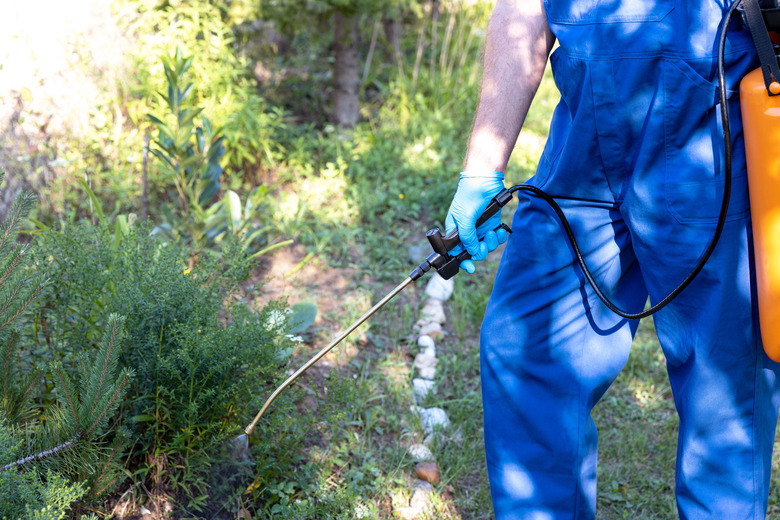How To Reverse Effects Of Roundup Weed Killer
We may receive a commission on purchases made from links.
Glyphosate, the active ingredient in Roundup, is the most-used herbicide in human history, and because it's so ubiquitous, it has become a significant environmental pollutant. It's a postemergent, nonselective herbicide, which means it will kill any plant that is actively growing. In fact, the more vigorous the growth, the more effective the death-dealing action of glyphosate.
If you sprayed Roundup by mistake on a plant you don't want to kill, you may be able to save the plant if you act quickly. However, once glyphosate gets in the soil and begins to break down, it can be converted into AMPA, a different type of plant toxin. The half-life of glyphosate in the soil can be as long as 197 days (although much shorter half-lives are more typical), and AMPA has an even longer soil persistence. Neutralizing glyphosate in the soil is even more important than saving individual plants if you want a healthy garden.
I Sprayed Roundup by Mistake: Now What?
I Sprayed Roundup by Mistake: Now What?
Besides glyphosate, Roundup contains a surfactant (polyethoxylated tallow aminem, or POEA), which helps the mixture penetrate the green leafy parts of growing plants. Once glyphosate penetrates, it moves quickly to block key amino acids needed for growth, and the plant dies. That means time is of the essence if you want to save a plant you accidentally sprayed.
You can't neutralize glyphosate per se, but you can wash it off with clean water if you act quickly. Hose down the plant thoroughly. If you're too late and the plant starts to die, you may be able to save it by pruning off the leaves and branches that are turning brown. This strategy works best on large plants with multiple branches.
Neutralizing Roundup in the Soil
Neutralizing Roundup in the Soil
Glyphosate becomes acidic when it leaches into the soil, but it's a salt when you apply it, and one way to neutralize it is to introduce a salt into the soil, specifically a calcium or magnesium salt. Epsom salt is a magnesium salt, so if you mix that with water (2 teaspoons per quart) and use it to flood the affected area at the rate of 1 quart per 10 square feet, there's a good chance the glyphosate molecule will bind to it electrostatically. This effect is enhanced if you first treat the soil with garden lime to raise the pH.
You can also introduce bentonite clay, which is sold in garden centers as a soil amendment, to neutralize glyphosate in the soil. You can use this in conjunction with the lime and Epsom salt treatment since it isn't affected by soil alkalinity. It doesn't get rid of glyphosate, but it binds the molecule permanently so it can't do any damage.
I Accidentally Sprayed Roundup on the Lawn
I Accidentally Sprayed Roundup on the Lawn
Roundup is generally considered safe for lawns if you use it when the grass is dormant, but sometimes, grass that appears dormant actually isn't. Bermuda, zoysia, and St. Augustine don't go completely dormant in the winter, and if the grass is growing even sluggishly, Roundup can penetrate the blades and do its damage. The result is patches of dead brown grass.
To revitalize the lawn, you have to physically remove the dead turf to expose the soil. You can treat the soil with Epsom salt, lime, and bentonite clay, but sometimes, all you need to do is add a layer of fresh topsoil. Re-seed or re-sod the affected areas and growth should return to normal.
